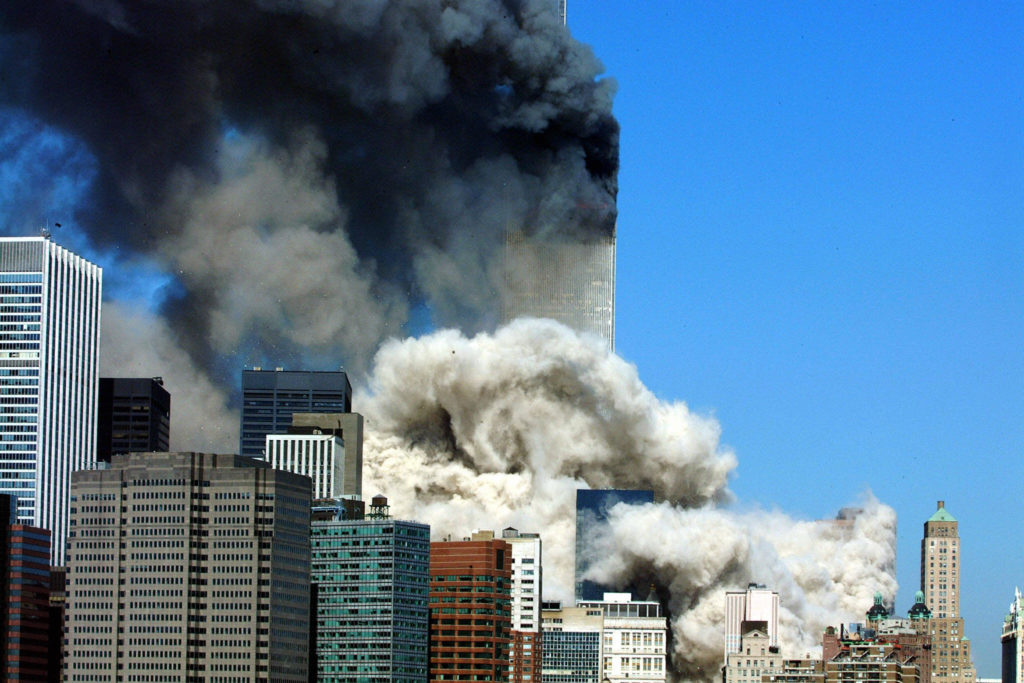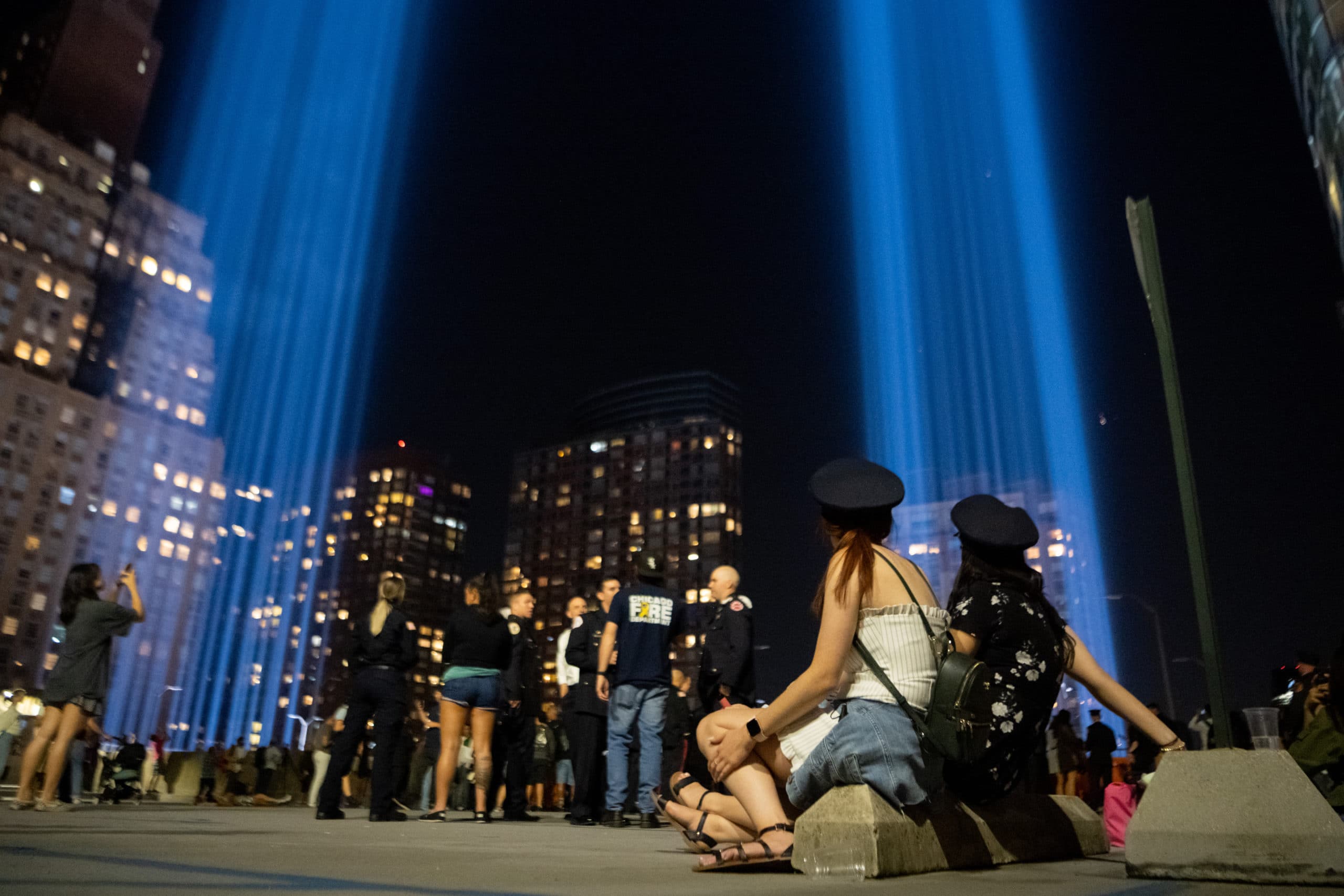Four of the six towers planned on the former Ground Zero site are now open and nearly fully leased, including the centerpiece One World Trade Center. Lower Manhattan has come a long way from its darkest day—but will it continue to thrive when the threat is microbes, not militants?
O
n the morning of September 11, 2001, the Brooklyn-born real estate developer Larry Silverstein was getting dressed to go to work at the World Trade Center when his wife, Klara, reminded him he had an appointment with his dermatologist. Now, two decades later, he credits that moment with saving his life.
“If it hadn’t been for Klara’s everyday concern for my well-being, I wouldn’t be here today,” the 90-year-old Silverstein told Forbes in early September.
Just six weeks earlier, Silverstein and a group of minority investors had won a 99-year lease on the twin towers from the Port Authority of New York and New Jersey for $3.2 billion. Ten days after the attacks that leveled the World Trade Center towers and took the lives of 2,753 people in New York City, the lifelong New Yorker held a press conference to declare his intention to rebuild. Rejecting suggestions by then-Mayor Rudy Giuliani (and later, Mayor Michael Bloomberg) to turn the entire site into a memorial or a residential neighborhood, he decided that the only way forward was to try to restore the area into a thriving business district.
Loading...
“After 9/11, there was a great debate over what should be built at the World Trade Center. It was quintessential New York: passionate, loud and fractious,” says Silverstein. “But one thing was clear. The new World Trade Center needed to be much more than what it had been before.”
It would take 99 days for the fires to stop burning at Ground Zero and more than a year until ground broke on the first of the new towers, 7 World Trade Center, in November 2003. Twenty years and $20 billion of public and private investments later, lower Manhattan has come a long way from one of the darkest days in New York City’s history.
What might have seemed impossible in the aftermath of the attacks—to recreate a bustling commercial district at the heart of lower Manhattan—has not only become a reality, it’s also been a relative financial success. Forbes estimates the combined value of the completed office buildings that currently house more than 40 tenants—One, 3, 4 and 7 World Trade Center—to be more than $11 billion. Silverstein, his partners and the Port Authority owe about $3.3 billion of debt, held in the form of tax-exempt Liberty Bonds due in 2100, on the properties.

That’s far higher than the $3.2 billion Silverstein paid in June 2001 ($4.9 billion adjusted for inflation today) and the $4.6 billion he received from the insurance payouts following the disaster. Still, it’s quite a bit short of the $20 billion plowed into the project by public and private investors since 2001. That sum includes $4 billion that the Port Authority and the Federal Transit Administration spent on the Oculus transportation hub and $1 billion spent on the Memorial Plaza and Memorial Museum. Another $3 billion went to underground infrastructure, streets, utilities and open spaces. According to Lynne Sagalyn, a Columbia Business School professor who authored a book on the redevelopment effort, the total costs will rise to $26.2 billion as construction moves forward on 2 World Trade Center, an office tower where Silverstein is still looking for an anchor tenant, and 5 World Trade Center, slated to become a residential building in a joint venture between Silverstein and Brookfield Properties. Once it’s all complete—people familiar with the project estimate it will take another five years—the combined square footage of office space will be more than 12 million, nearing the 13 million square feet in the old complex.
One World Trade Center, which tops out at a symbolic height of 1,776 feet (the year the Declaration of Independence was signed), instantly became an icon of New York’s skyline when it opened in 2014. The Durst Organization, owned by the billionaire Durst family, bought a 10% stake in the project in 2010 from the Port Authority for $100 million, which owns the rest; Silverstein gave up the rights to develop the tower in 2006 in a deal that secured public debt financing for the rest of the development. Controversial at first, the tower is now 90% leased, and 8,000 employees of tenants such as publishing giant Condé Nast and credit rater Moody’s have moved in.
“Some people thought that the building shouldn’t be built and that it should be a memorial to the people who perished on 9/11, some people thought [it] was a boondoggle,” says the Durst Organization’s vice president of public affairs Jordan Barowitz, who helped put together the project for the tower. “It’s really been gratifying to see the site become part of the city again. Re-establishing downtown as a creative office district has been intrinsic to the city’s success over the last two decades.”
Besides One WTC, three of the five towers first designed in 2003—3, 4 and 7—are also open and nearly fully leased, with tenants ranging from Spotify and Uber to Moët Hennessy and Morningstar. Silverstein Properties owns all of tower 7 and has significant stakes in the 3 and 4 World Trade Center buildings, alongside minority investors including America’s richest real estate family, the Goldmans.
Lower Manhattan today is more than just an office district: Nearly 18 million people have visited the 9/11 Memorial Museum since it was opened in 2014. The Oculus—the shopping mall and transit center designed by Spanish architect Santiago Calatrava—opened in time for the 15th anniversary of the attacks in 2016. Replete with 3,000 tons of imported Italian marble quarried in the Alps, its skeletal structure stands in stark contrast to the glass-paneled skyscrapers towering nearby and the slabs of granite from Zimbabwe and Sardinia that line the walls and floors of its next door neighbor, 3 World Trade Center. Before the Covid-19 pandemic pumped the brakes on office commutes, at least 250,000 people passed through the station every day—more than three times the 70,000 people who commuted to the original World Trade Center towers prior to 9/11.
“At the end of the day, our vision was to create a better version of New York,” says Silverstein. “That vision is now a reality. Today the new World Trade Center has come alive as a dynamic public space with timeless architecture.”
The first proposal for a World Trade Center at the southern tip of Manhattan came in 1946, barely a year after the end of World War II. Harry Truman was still president when the New York state legislature established the World Trade Corporation to explore the construction of a World Trade Center; it would take another 12 years, until 1958, to hire an architectural firm to develop a plan for the new complex. David Rockefeller, the president of Chase Bank and a scion of the Rockefeller family, established the Downtown Lower Manhattan Association that year to guide his vision for a project that would remake lower Manhattan.
In 1960, the Downtown Lower Manhattan Association put forth a plan for a 5 million square foot office development by the East River that would cost $250 million to build ($2.3 billion in 2021 dollars). By 1962, when the Port Authority moved the proposed development to its eventual site bordered by West, Church, Liberty and Vesey streets, the estimated price tag had grown to $280 million—$2.5 billion today—a sum so large that Minoru Yamasaki, the architect tapped to design the buildings, thought it was a typo when he first saw it.
Thirteen city blocks of low-rise buildings were demolished to make way for the new World Trade Center starting in 1966, and construction began on the north tower in 1968. When the towers finally opened in 1973 as the tallest buildings in the world—beating out their crosstown rival, the Empire State Building—the construction costs for the hulking steel structures had ballooned to $900 million, or $5.5 billion adjusted for inflation today.
Initially maligned as a vanity project pushed by Rockefeller and his brother Nelson, who was then the Republican governor of New York, the towers eventually became a beloved part of the city’s skyline. According to one estimate, the towers made appearances in more than 1,000 movies, including King Kong, Home Alone 2 and the first Superman film in 1978.
The World Trade Center’s tenants at the time of the attacks reflected New York’s status as the world’s financial capital: Bank of America and financial services firm Cantor Fitzgerald had offices in the north tower; the New York Stock Exchange and Morgan Stanley had space in the south tower; and Credit Suisse First Boston, Salomon Smith Barney, the U.S. Department of Commerce and American Express were in the 5, 6, and 7 World Trade Centers, all of which were destroyed on 9/11.
Today, the rebuilt World Trade Center site reflects how New York’s economy has changed since 2001. Some of the tenants that anchored the former twin towers no longer exist or have been rendered irrelevant over the past two decades—from Lehman Brothers, which famously collapsed in the 2008 financial crisis, to Xerox, which saw its eponymous machines fall out of favor with the rise of the Internet. Taking their place in the new towers are a broader range of multinational firms and homegrown startups, running the gamut from wedding planning service Zola and mattress firm Casper to spirits giant Diageo and streaming service DAZN.
“Today [lower Manhattan] is a much more diverse economy, and the number of residents living there now is almost twice as many as before 9/11,” says Sagalyn of Columbia Business School. “Those trends were in place prior to 9/11. The amount of federal funds and local, city and state efforts put into lower Manhattan really did have the impact of accelerating those trends.”
The largest question mark hanging over lower Manhattan is the Covid-19 pandemic. Since the virus first swept through the city in March 2020, taking the lives of nearly 34,000 New Yorkers and confining millions of commuters to their homes, the area has not returned to its pre-pandemic normal. That has spelled trouble for the huge (and expensive) office spaces available in the World Trade Center towers: In November, Uber reportedly offered to sublease 25% of its office space at 3 World Trade Center. Condé Nast owner Advance Publications paid some $10 million in back rent to the Durst Organization and the Port Authority in August, months after it started withholding rent in January, amid rumors the anchor tenant planned to decamp early and end its lease, which runs through 2039.
Still, the developers are convinced that recovery is on the way: One WTC is slated to reach 93% occupancy thanks to a flurry of recently signed leases, according to the Durst Organization’s Barowitz. “There will be a flight to quality, as there frequently is when there’s a downturn in the market,” he says, highlighting the advantages of the WTC buildings compared to older office towers in Midtown. “Not just because of the views and the prestige, but also the quality of the space from an efficiency and productivity and health perspective.”
For Silverstein and the Dursts, the success of the World Trade Center redevelopment is proof that it’s never a good idea to bet against New York City.
“This town always comes back,” says Silverstein. “Stronger than ever.”
By Giacomo Tognini, Forbes Staff
Loading...





















